Survival through dehydration
November 4, 2008
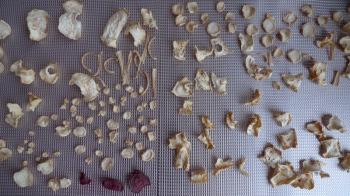
Looks like rat tails and bones. Guess I’m just getting visually prepared for the future!
Well if the whole world goes to pot (and not in the good way) at least I will have dehydrated exactly 2 days worth of essential parsley root. And if I keep at it, soon I’ll have saved enough celeriac chips to barter myself a dirty vodka martini.
No offense Mormons and Survivalists, but as much as I adore playing with my food and eating like a Tibetan nun, I’m having a hard time finding the sexiness in dehydrating personal stores of food. In the mean time, I’m taking this cool dehydrator tool for a spin, though in my heart I prefer a community pickle and a community solution. Maybe I should have dessicated something a bit more joyous than beige roots or things perfectly capable of preserving themselves. Maybe I’ll revisit the raw food folks. Despite the rhetoric, they do the cuisine vĂ©gètal a nice turn.
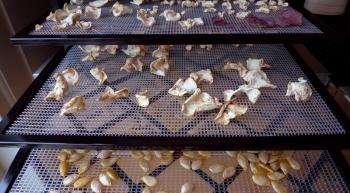
Handy-to-mouthy for drying pumpkin seeds. In case I ever run out.
I’m not knocking the Excalibur. Technically and visually it’s handy as Hell, but it would be a dang sight handier if I had big batches of summer fruit to process. Anyway, I’m banking on my kimchi making skills to get me through the Apocalypse. Denial?
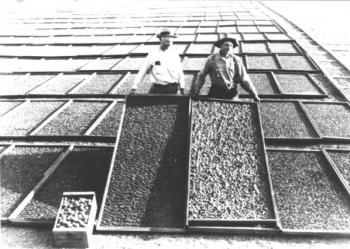
Apricot drying in the Old Country, back in the day. Image used entirely without permission.
If I remember correctly, as a kid growing up in California, we used to dry the family’s summer haul of apricots, plums and figs on large redwood trays delivered to the house. (M & D, how did that work? Did the trays stay? Was it a municipal service for apricot-rich people? Are you out voting correctly right now?)
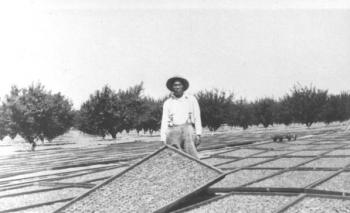
Cots and cots, as far as the eye can see. Image used entirely without permission.
Today, KvR and I agreed that all of these high-end kitchen tools need to be about increasing joy and variety in the belly, not about merely surviving or practicing deprivation. It’s not the Excalibur’s fault that it’s hugely popular amongst overly sober goat-knitters. But food flow begets food flow, and a cook in the habit of ‘moving’ food is certainly the most resilient in any type of crisis. Yes, us urbanites living in cities’ with a mere 4 days of food in store for us, most of it in transit, are wise to be prepared for transitions and downturns. Like Sharon Astyk says, your skill as a versatile cook will be your most important tool.
Surviving the New Depression: Tip #43
Steve Delahoyd made a series of ‘Just get on with it’ videos, this one is about New Local Economic Transactions.
But seriously…
Historic images of Sunnyvale in Santa Clara County California (a Blue State) where, ‘It used to be ALL orchard.’Transition Culture dot org, Robert Hopkins is an expert without being gloomy.
The Excalibur Dehydrator - the definitive food dryer
Juliano’s recipes using the dehydrator have lots of joy, if not evangelical zeal.
debra at 20:39 | | post to del.icio.us


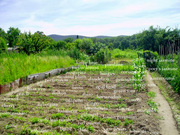
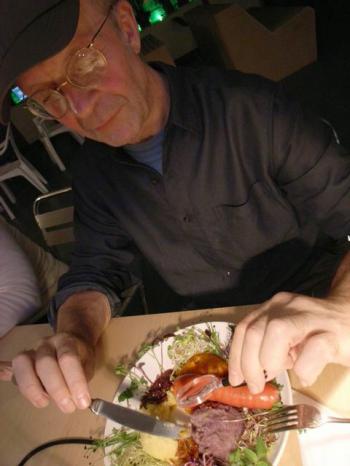
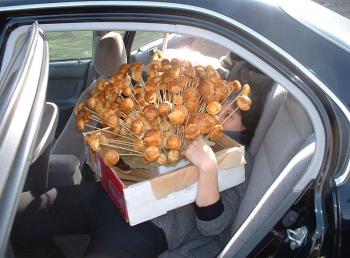
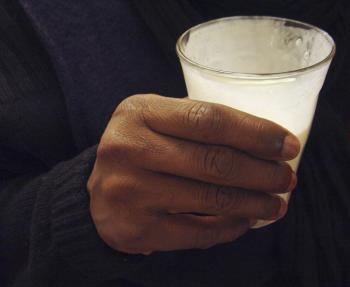
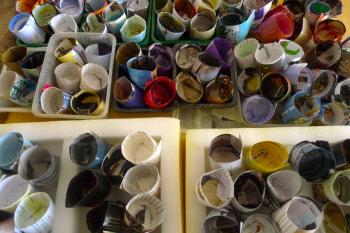










No offense taken.
Comment by A Mormon and a Survivalist — November 4, 2008 @ 20:49
Dear Debra,
Si se puede. Yippee!!!
About the people drying the ‘cots. They did charge for the drying process. We would pick, cut , and load the trays. They sulfur them (I think), i.e. put the loaded trays in a shed and burn some sulfur to prevent the cots from turning brown, then they would dry them— in the sun (I think). We would then get the dried ‘cots in large paper bags. If the memory is weak— this all took place 29 + years ago.
Will start looking for photos of your grandparents yard soon.
Liefs,
Dad (mom atg)
Comment by Dad — November 5, 2008 @ 23:03